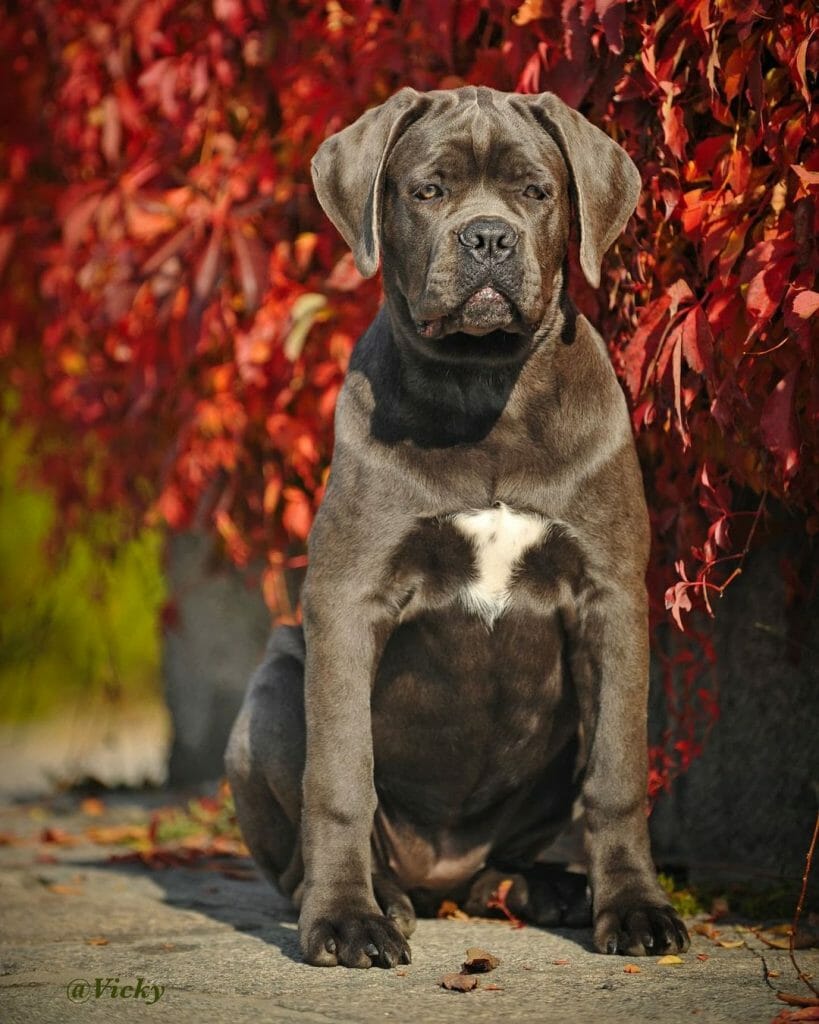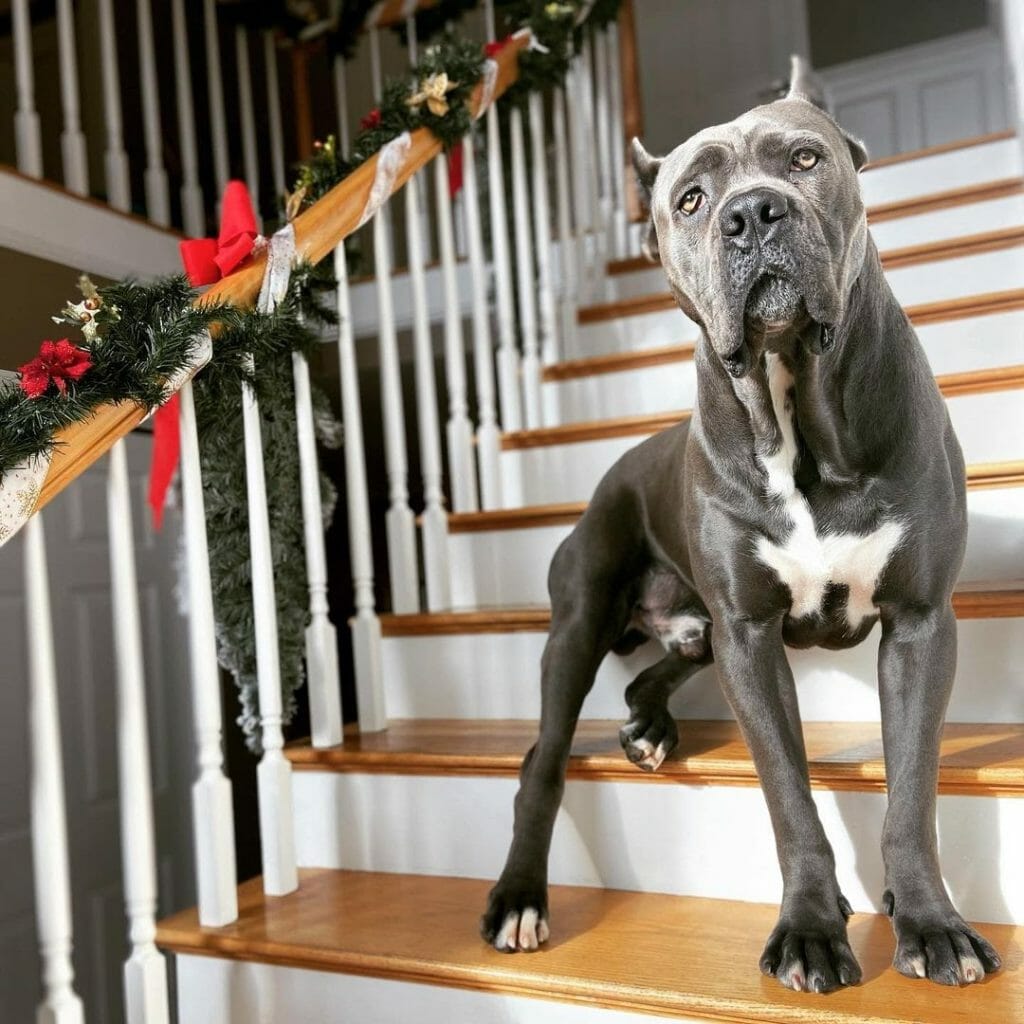How Big Do Cane Corsos Get? Growth Chart and More!
To get right to the point, a Cane Corso can reach over a hundred pounds matched with a height at withers that far exceeds 23 inches! In other words, this breed is seriously massive, so make sure you have just enough space for him at home. He’s not typically clumsy or unruly, but he has loads of energy to move around. Therefore, knowing how big he gets is just vital information for prospective owners.


Whether you live in an apartment or a home with a yard outside, this Italian Mastiff can learn to adapt, but it won’t be the case if the place is too cramped. To help you foresee what it’s going to be like having this canine, here’s an article that will walk you through his growth chart and more!
Table of Contents
When Do Cane Corsos Reach Their Full Size?
Most Cane Corsos only take around a year before they get to their full adult size, while some would need at least 2 years. It depends since each dog develops as an individual. If you are going to observe how your puppy grows, you’ll notice that in his first few months, his size prominently changes rapidly. After about a year or so, the difference is no longer obvious, but weight and height continuously but slowly add up.
To put gender as a factor, females typically reach maturity faster than their male counterparts.
Why Do Cane Corsos Grow Up Big so Fast?
It is simply because of genetics. Cane Corsos are bred to grow up as large dogs that weigh not just 50 but 100 or more pounds! If you haven’t seen a Corso puppy in person yet, you will be surprised at how big he is compared to a young Chihuahua.


The frame and structure of his body enable him to take in as much milk as he can get from his mother. The moment he is weaned, it is also expected for him to consume food more frequently than adults since this is when they rapidly grow. The interesting part about big dogs like the Cane Corso is that although he physically transforms at a fast rate, it remains a fact that he needs a much longer time to achieve the ideal proportions.
Cane Corso Weight Chart
Owners who have Cane Corsos at home must be guided by being aware of what the right average weight their puppies should have to ensure normal growth and development. So, here are the weight charts of both male and female Cane Corsos depending on their age:
Male
| Age | Weight (lbs) |
| 1 month | 20-28 |
| 2 months | 30-36 |
| 3 months | 25-40 |
| 4 months | 42-46 |
| 5 months | 48-55 |
| 6 months | 60-65 |
| 7 months | 65-70 |
| 8 months | 70-80 |
| 9 months | 80-90 |
| 10 months | 85-95 |
| 11 months | 90-100 |
| 12 months | 90-105 |
| 24 months | 99-110 |
Female
| Age | Weight (lbs) |
| 1 month | 16-25 |
| 2 months | 26-32 |
| 3 months | 30-37 |
| 4 months | 36-43 |
| 5 months | 42-50 |
| 6 months | 55-60 |
| 7 months | 60-65 |
| 8 months | 65-72 |
| 9 months | 68-75 |
| 10 months | 75-82 |
| 11 months | 80-90 |
| 12 months | 85-95 |
| 24 months | 88-99 |
Cane Corso Weight Chart
Of course, let’s not forget about learning the desired weight chart for the Cane Corso. This will largely help you in determining if your buddy is potentially in an underweight, healthy, or overweight state. Check out the chart below:
| Age | Height (inches) |
| 2 months | 12-15 |
| 3 months | 14-17 |
| 4 months | 16-20 |
| 5 months | 21-22 |
| 12 months | 23-26 |
| 24 months | 23.5-27.5 |
What Is the Ideal Size of a Cane Corso?
According to the American Kennel Club (AKC), a Cane Corso must ideally be 23.5 to 26 inches in height if it is a female and 25 to 27.5 inches if it is a male. They have not set an ideal weight, but they remind owners that the mass must be proportionate to the height. To know if your dog is at the right weight, his stomach should not look too thin nor too chunky from a bird’s eye view. If you look at him from the side, the narrowing of his chest up to his rear should appear non-extreme. The reason why organizations set standards is for breeders to breed and produce healthy dogs.
4 Factors That Can Impact His Growth
Growth can be delayed or permanently impacted depending on what caused it. No matter the expectation that Cane Corsos generally achieve a certain height and weight, 4 factors can come into play and change the whole narrative.
Genetics
Make sure you get to have the opportunity to meet the parents of the Cane Corso puppy you’re into. Chances are that if the parents are large, then the offspring may end up reaching the same size.
Spaying/Neutering
Spaying and neutering are popular procedures mainly done to Cane Corsos that are labeled as pet-quality. These dogs are not fit to be bred since they do not possess the desired features set by the AKC. When a Cane Corso gets “fixed”, this will cause a delay in the closure of growth plates inside his body. This results in him growing even taller than he should have.
Malnutrition
Unsurprisingly, a lack of proper nutrition can cause stunted growth in dogs. If the Cane Corso doesn’t have enough food nor receives the right nutrients, he’ll turn out smaller than his age. Puppyhood is a vital stage in his life and that’s when he needs vitamins, minerals, and other nutrients to help muscle and bone growth.
Worm Infection
Found to be a common problem, be at a lookout in case your Cane Corso is infected with ringworms! Even if you feed him properly, his body will not absorb all the nutrition he needs since other organisms eat out what he needs for proper growth.
3 Ways to Help Your Cane Corso Reach His Full Size
We are on board with you when it comes to guaranteeing that your Cane Corso grows up well! This enables a happier and longer life, free from issues that can be avoided through the right care and attention. If you’re a new Corso parent, check out what you can do in raising your buddy:
Right Food & Diet. Don’t go cheap when it comes to dog food. Only purchase those that use high-quality ingredients beneficial for a large dog such as a Corso. What we recommend to you is the Purina One Smartblend as this continuously satisfies thousands of owners worldwide!
Regular Exercise. Get your Corso active through regular exercise! Although activities don’t have a direct relationship with growth, they still can have a certain effect on the dog’s outward appearance. Subject him to challenging drills each day as these strengthen his bones and improve proper posture. Sweating off will also help him take off excess weight.
Scheduled Vet Visits. Allocate a certain budget for regular vet visits for your Corso. When there is a scheduled time for check-ups, problems can be detected and treated early. He will also be able to assess if your dog is at his right weight or not and recommend the right diet or dog food to buy.
